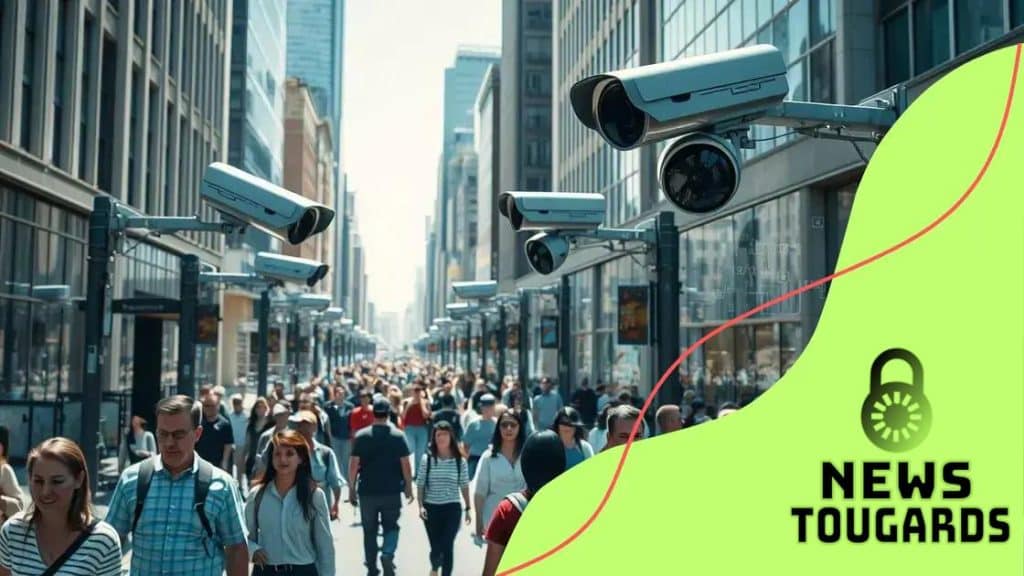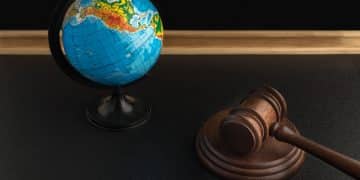The role of facial recognition in enhancing public safety

The role of facial recognition in enhancing public safety involves improving crime detection and prevention, but it raises significant concerns about privacy and civil rights that need to be carefully balanced.
The role of facial recognition in enhancing public safety is becoming increasingly significant in our daily lives. Have you ever wondered how this technology impacts our safety in public spaces? In this article, we’ll dive into its implications and uses.
Understanding facial recognition technology
Understanding facial recognition technology is crucial as it becomes a key player in our daily security measures. This technology uses algorithms to identify and verify a person’s identity by analyzing facial features from images or videos.
How it Works
Facial recognition operates through several steps. First, a face is detected using various techniques, such as machine learning and artificial intelligence. Then, the system captures the facial features and creates a unique representation of the face.
Key Components
- Image Acquisition: The system collects images from cameras.
- Facial Detection: Identifies a face within the image.
- Facial Features Extraction: Analyzes specific characteristics of the face.
- Face Matching: Compares the extracted features with a database.
This process can happen in real time, allowing for quick identification in crowded areas. The integration of database records with facial recognition helps enhance security. However, it’s essential to consider the implications of privacy. As we rely more on this technology, we must address the balance between safety and personal rights.
Furthermore, many organizations employ this technology in various sectors. For instance, law enforcement uses it to track suspects, while retailers implement it to enhance security measures. The effectiveness of facial recognition hinges on continuous improvements in algorithms and databases.
As we explore the capabilities of this technology, it’s vital to acknowledge its limitations. Environmental factors, such as lighting and angle, can affect accuracy. Public perception plays a significant role as well, leading to debates about ethics and privacy.
Applications in crime prevention
Applications in crime prevention using facial recognition technology are becoming more prevalent. Law enforcement agencies are leveraging this tool to enhance public safety and improve response times during incidents.
Identification of Suspects
Facial recognition can quickly identify suspects in a matter of seconds. This capability helps police apprehend individuals who are wanted for crimes by matching faces captured on surveillance cameras with images in their databases.
Real-Time Alerts
Many jurisdictions are implementing systems that provide real-time alerts when a known criminal enters a specific area. This proactive approach allows law enforcement to respond promptly and potentially prevent crimes before they happen.
- Immediate identification of threats.
- Enhanced patrol strategies based on real-time data.
- Decreased response times during emergencies.
Furthermore, facial recognition technology can assist in reducing false accusations. By confirming identities accurately, it helps ensure that innocent individuals are not wrongfully implicated in criminal activities. This technology is also beneficial in managing large crowds during events, helping security personnel monitor activities effectively.
Additionally, businesses are also adopting this technology to prevent theft. Retailers can use facial recognition to identify known shoplifters and alert staff immediately, reducing potential losses.
The combination of data analysis and facial recognition empowers authorities and businesses to take a more comprehensive approach to security. As technology progresses, these applications in crime prevention will likely evolve further, enhancing effectiveness and reliability.
Debates on privacy and ethics

Debates on privacy and ethics surrounding facial recognition technology are increasingly important. While the technology can enhance public safety, it also raises significant questions about personal freedoms and data security.
Public Concern
Many individuals express concerns about being constantly monitored. The idea that their faces can be recognized by cameras everywhere can feel intrusive. This leads to a discussion about the right to privacy in public spaces, which can often be overlooked in the name of safety.
Ethical Implications
Facial recognition technology can also raise ethical dilemmas. Issues like racial bias in facial recognition systems have been documented. Some studies suggest that these systems may be less accurate for minority groups, raising concerns about fairness and equality.
- Potential for misuse by authorities.
- Impacts on marginalized communities.
- Risks of surveillance overreach.
There are also worries regarding data storage and security. If facial data is not properly protected, it could be accessed by unauthorized individuals, leading to misuse. Lawmakers are discussing how to regulate the use of this technology effectively to protect citizens.
Public sentiment is varied. Some people support increased security measures, while others fear government overreach. Finding a balance between safety and individual rights is a complex issue that requires careful consideration.
Advocates for regulation are pushing for transparency in how facial recognition systems are used. They argue that individuals should have more control over their data. As discussions evolve, stakeholders must consider both the benefits and risks associated with this technology.
The future of security with facial recognition
The future of security with facial recognition technology looks promising and transformative. As advancements continue, we can expect to see this technology become even more integrated into our daily lives.
Enhanced Accuracy
One trend is the improvement in accuracy. With better algorithms and machine learning techniques, future systems will reduce false positives and negatives. This means that the technology will not only identify individuals more reliably, but also minimize mistakes that can lead to serious consequences.
Broader Applications
Facial recognition will expand beyond law enforcement. It’s likely to be used in a variety of sectors, from retail to healthcare. For instance, hospitals may utilize this technology to streamline patient identification, enhancing security and improving service.
- Increased implementation in public spaces.
- Integration with smart city initiatives.
- Utilization in emergency response systems.
Improved accessibility is another aspect. As devices become more sophisticated, personal access systems using facial recognition may become commonplace. This will allow people to unlock their smartphones, access secure buildings, and even approve transactions with ease.
Moreover, as society continues to debate the balance between security and privacy, future regulations will play a vital role. Governments will likely implement guidelines to ensure responsible use, focusing on protecting individual rights while leveraging the benefits of this technology.
Collaboration between private companies and public agencies could lead to innovative solutions. By working together, they can address concerns and enhance the effectiveness of facial recognition systems, ensuring they operate safely and ethically.
Balancing safety and civil rights
Balancing safety and civil rights is a crucial topic when discussing facial recognition technology. While this technology can enhance security, it can also infringe on individual freedoms.
Protecting Public Safety
Proponents argue that facial recognition improves public safety by helping law enforcement quickly identify and apprehend criminals. This creates a safer environment, especially in crowded places like airports and stadiums.
Respecting Civil Liberties
However, concerns arise about privacy rights. Many fear that constant surveillance could lead to a society where individuals are monitored at all times, resulting in a loss of personal freedom. People should have the right to feel safe and not be observed without their consent.
- Potential misuse of data collected by facial recognition systems.
- Impact on marginalized communities who may face disproportionate scrutiny.
- The need for clear regulations that protect individual rights.
Finding a path that respects civil liberties while ensuring safety is complex. Various stakeholders, including government officials, civil rights advocates, and technology developers, must engage in dialogues to address these concerns. They can explore ways to implement facial recognition technology responsibly while safeguarding personal privacy.
Clear guidelines and policies can help mitigate the risks associated with this technology. Public transparency in its use will also build trust among citizens. Ongoing discussions can help ensure that the adoption of facial recognition remains a tool for public good without infringing on individual rights.
In conclusion, the role of facial recognition technology in public safety is multifaceted. While it offers significant benefits, such as enhancing security and aiding law enforcement, it also raises important questions about privacy and civil rights. As society navigates this complex landscape, conversations between stakeholders are vital. By finding the right balance, we can ensure that technology serves the public good while respecting individual freedoms. Ongoing innovations, regulations, and community involvement will shape the future of facial recognition in our lives.
FAQ – Frequently Asked Questions About Facial Recognition in Public Safety
What is the main purpose of facial recognition technology in public safety?
The main purpose is to enhance security by quickly identifying individuals, which can aid law enforcement in preventing and solving crimes.
Are there privacy concerns regarding facial recognition?
Yes, many individuals worry about constant monitoring and the potential infringement on personal privacy and civil rights.
How can facial recognition technology be regulated?
Regulation can involve creating guidelines that ensure responsible use, protect individual rights, and require transparency from organizations using this technology.
What are the ethical implications of using facial recognition?
Ethical implications include potential biases in the technology, the risk of misuse by authorities, and the need to balance safety with civil liberties.





